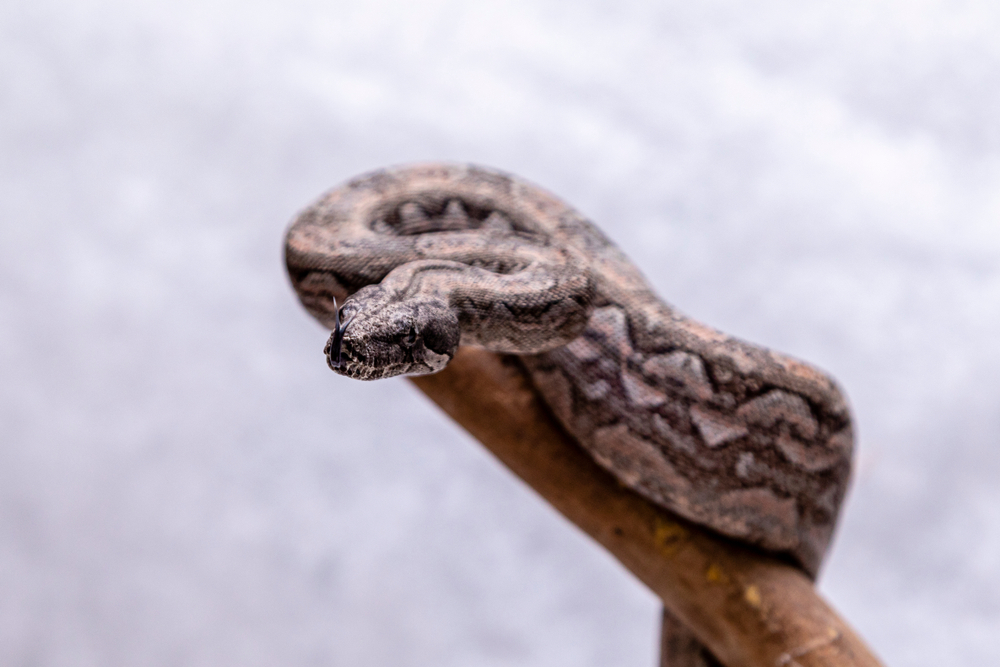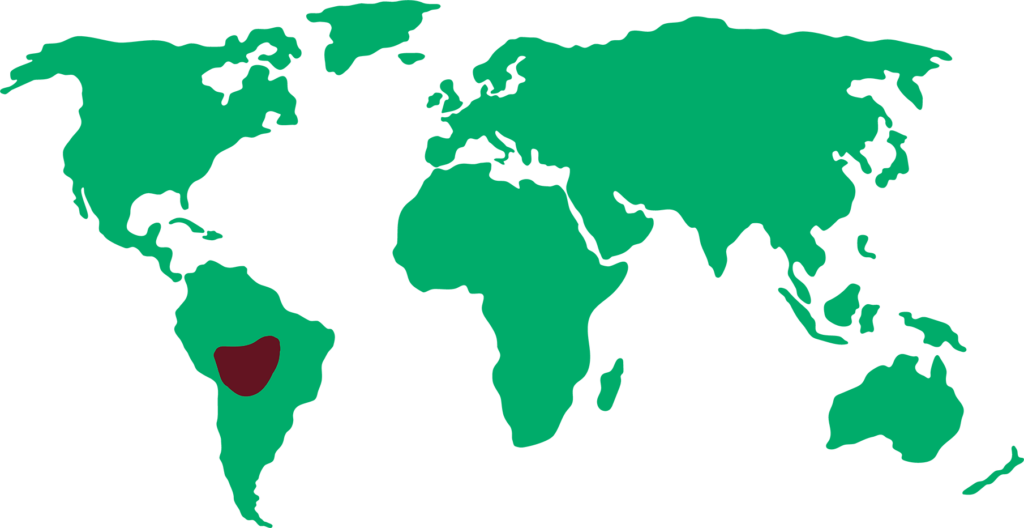SHORT-TAILED BOA
Boa constrictor amarali

LENGTH

2 m
WEIGHT

5 kg
LIFESPAN

30 years
The short-tailed boa is a subspecies of the boa constrictor in which two populations are differentiated: Brazilian and Bolivian. They are non-venomous snakes.
General characteristics
The short-tailed boa has a robust and strong body. Its main characteristic is that it has an extremely short tail that distinguishes it from any other subspecies of boa constrictor, hence the name.
The head is triangular with a longitudinal band that fades towards the snout. It has powerful jaws armed with four rows of long curved teeth on the upper jaw and two rows on the lower jaw.
The Brazilian short-tailed boa has a shiny greyish colour, while the Bolivian is brown colored. They also have numerous dorsal and lateral spots on the body.
Feeding
Being strictly carnivorous, the diet consists on birds, reptiles and mammals whose size varies according to the size of the boa.
Behaviour
They are terrestrial and arboreal animals. Although as they grow older, they become primarily terrestrial as they are too heavy to climb trees.
They usually sleep in undergrowth or vegetation during the day and emerge from their shelter at dusk to hunt at night. But they can also be found active during the day. They usually thermoregulate their temperature by sunbathing.
As a method of defence, they open their mouth widely and emit a loud, aggressive screech or jump up and down.
Reproduction
Females breed from their third year of age and give birth to 20-50 young after a gestation period of about 5 months. Each offspring is born wrapped in a jelly-like prenatal pouch, from which the mother helps it to emerge. The newborns lead an independent life from birth.
Threats
There are two main threats to this subspecies. The first is hunting for the skin of the boas and their subsequent commercialisation. The other is the conversion of their habitat to crops.
Distribución
They are distributed throughout South America, especially in southern Brazil and Bolivia. They inhabit desert, tropical forest, savannah and small tropical islands.

¿Sabías qué?
In Bolivia, they are sometimes known as silverback boas because of their silvery-grey colour.
It has cultural significance in some indigenous communities in South America, where it is considered a symbol of fertility and wisdom.
They are excellent swimmers and can spend long periods of time in the water.
Conservation status
